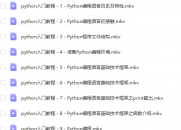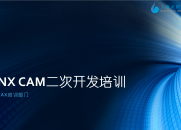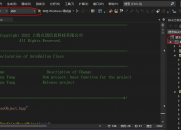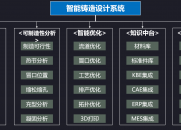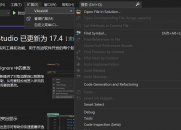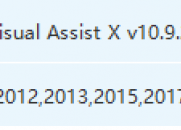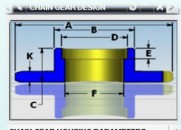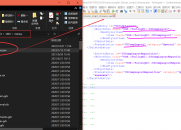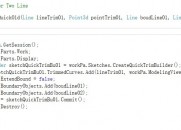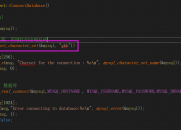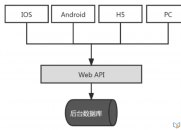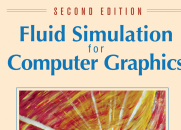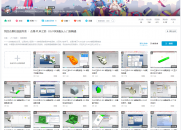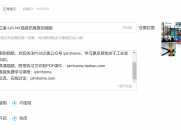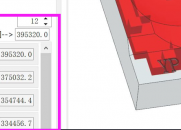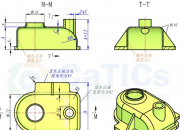|
|
请使用QQ关联注册PLM之家,学习更多关于内容,更多精彩原创视频供你学习!
您需要 登录 才可以下载或查看,没有账号?注册

x
0 C: u. L. {1 y! ~8 l+ f Y4 ?" Y
8 {- k9 n3 u c6 y( o% t O8 ?1 N( S/ o3 @
Once you have fully tested your NXOpen API application, you should "sign" it
5 g- u0 }2 K+ @5 e' obefore distributing it to your end users. Even if your end users also have, t# u/ I: ~, ?" [: V
access to the Author license which is required to load and run an NXOpen
3 A; I# E9 v/ ?' y8 bapplication, signing it has its benefits.
, m7 i) h% E8 g$ T- t3 r G( @( R% H- s
- Your application will load faster because NX will immediately recognize
) q; d/ i6 D9 F2 ` that it has been signed.
, a. m" o+ @& ]1 S0 z; o - The syslog (Help-> Log File) will not be cluttered with the output from, r# S& V# N. Y& m- s9 R1 j" I
the multiple checks that NX will do to determine whether it can load* W& s; a( U: H0 O; K$ L0 Z
and run the program.! {6 S- q) A( B7 K) r. C# K
; l U5 m) \" F1) C/C++, C# or VB only (Java: Proceed directly to step 3)
8 n- Z3 c& w/ s* b+ a5 s8 {
5 O; T& }5 I, i) x2 p5 M Add the NXSigningResource to your Visual Studio project" }8 D B+ R* U# q$ i& A' J) e
2 h- u: z( ]/ P0 C8 `" z' N In the Solution Explorer, select the Resource Files folder and
) t( V& R6 ^. n' N <RMB>Add-> Existing Item' J3 x2 j% p* p8 w: Q
8 R# R3 k6 p6 f/ H) c+ P C/C++:
+ n% g# U& ^& J/ |+ p Browse and select %UGII_BASE_DIR%\UGOPEN\NXSigningResource.cpp
, ~1 w! I6 \* S3 g/ U9 U C# or VB .NET:
- }3 o+ s5 ~5 G6 `; M7 g+ ~/ ~ Browse and select %UGII_BASE_DIR%\UGOPEN\NXSigningResource.res
! V9 J$ u# V7 V, v: P4 O9 H; ~ Select the newly added NXSigningResource.res and in set
1 W% q0 m, _2 t( } Properties-> Build Action = Embedded Resource8 c& g- j: m4 j. V+ i
7 b- m8 L8 K8 [: ]0 H* Z2) Make sure the build configuration is set to Release then0 d5 l4 S7 @- V# x8 E- G
Build-> Rebuild Solution
6 E C. z7 L" _& v @& p
6 g ?' G( I' |. Z4 r3) Sign the executable from an NX Command Prompt window:( Z3 F. a7 P- C$ ]
You probably already have one open because you started the Visual
/ Z5 w* N# u2 |# M0 d Studio or Eclipse from it. Otherwise:
3 j% D/ {7 J/ K% H+ Y! f0 x6 s Start-> All Programs-> NX#-> NX Tools-> Command Prompt
/ M, Q) U% C: ~) n+ E" U0 e! r6 @' p1 Q& J/ Z# c" v
Java:
8 K- q- v' X( g' a2 L, g& v; | signJar <path to your>.jar- d9 B. o: x# d" ?% |1 ]
& d; N( w4 o7 ^6 n, ^1 [* k C/C++:0 Z# D3 q& l; h* v9 o8 l" s9 m; {
NX8.5 and later:
% N( j0 O- M4 [! Y7 _ signCpp <path to your>.dll or .exe
# R: Z' F/ {6 e NX8.0 and earlier:' J- k, R% Q: P% Z
nxSign <path to your>.dll or .exe6 U+ |- {& r. ^: c) @' B" R! f
$ {0 Z' L; [9 C Z) s2 s: [ C# or VB .NET:
& K; f& u3 _- V, |2 Y3 E NX8.5 and later:
! T. {5 }9 R! X+ o9 v0 d" y6 m8 j8 B signDotNet <path to your>.dll or .exe
1 `4 h9 f1 W0 s* v+ N9 C9 t NX8.0 and earlier:
2 Y5 a& d6 O! \) u) d signLibrary <path to your>.dll or .exe, \+ O k/ o" N& ]5 Q
0 t$ n" i) ~! }. c7 F( R9 S& K' H) ~Note: You do not need to use the path to the signing utilities because the) R/ O4 d& ?) y" L( Q% c$ r! A
PATH of the NX Command Prompt shell already includes both the UGOpen and UGII
N. b; A$ E1 d0 y! ? W1 \ |6 Z- I7 Ofolders.2 y7 e% H0 Y9 Y" ] ~
& B# m& H& H7 j. b/ j! A d
|
|
